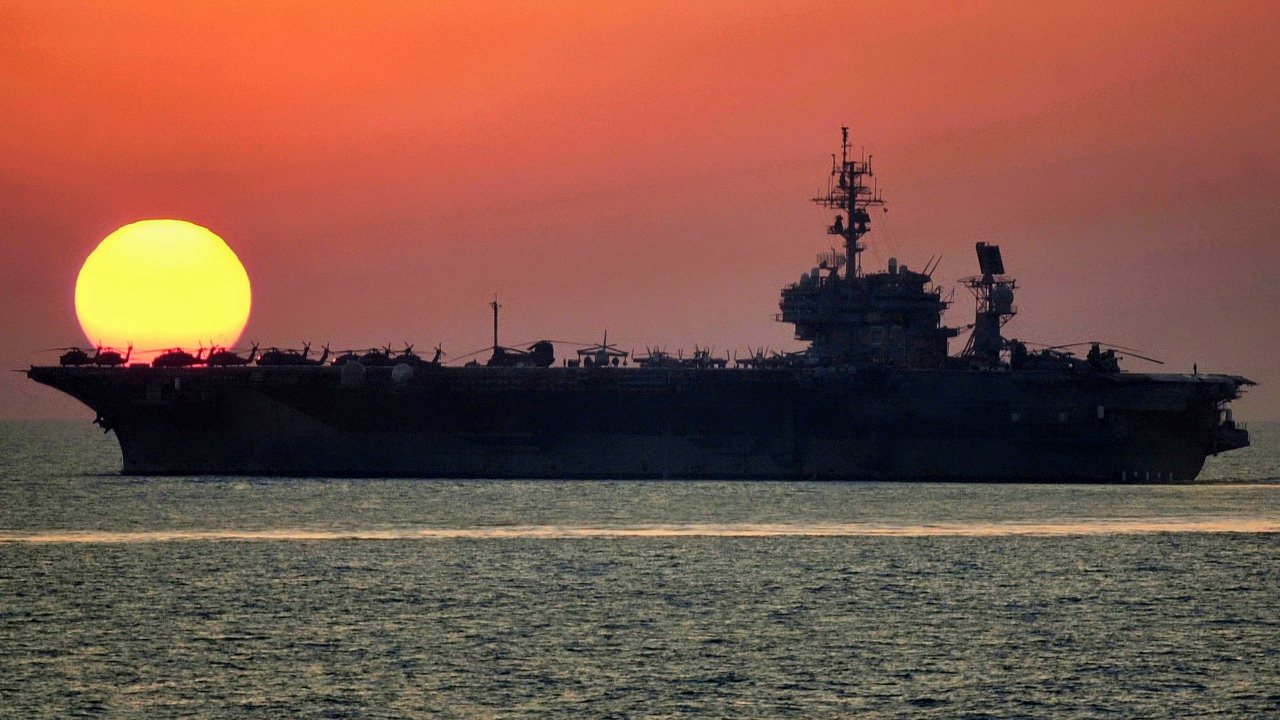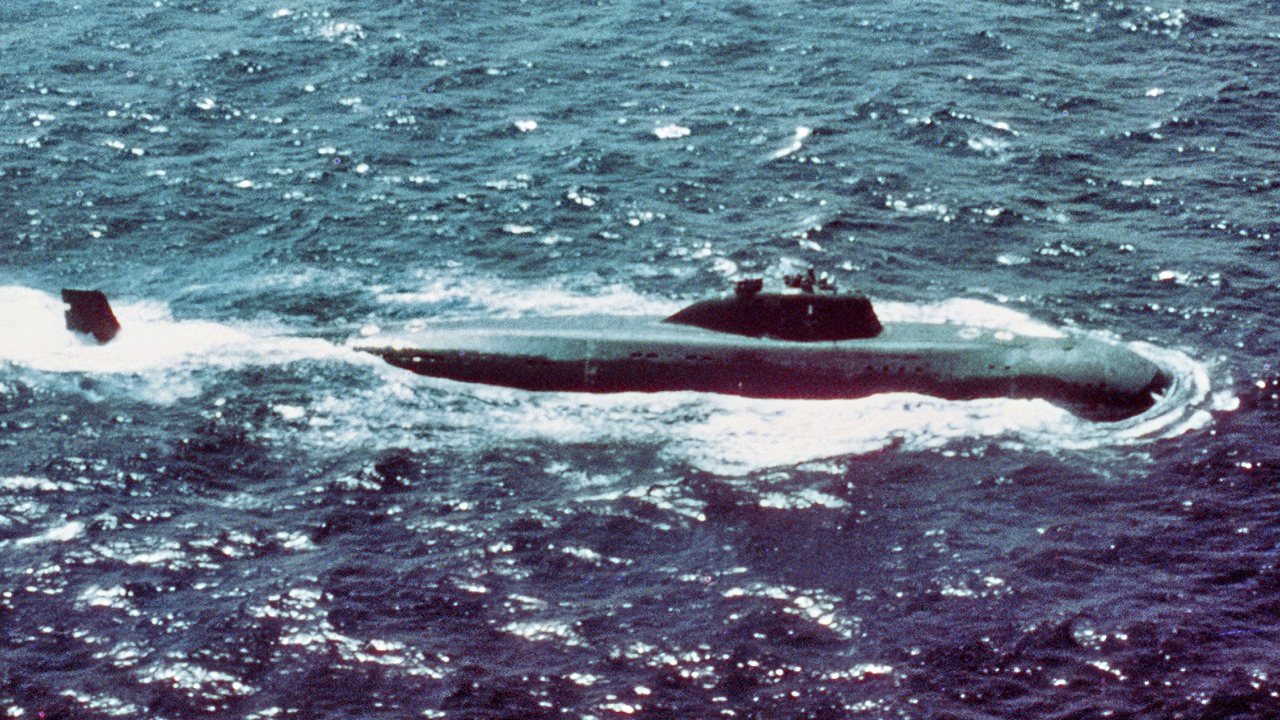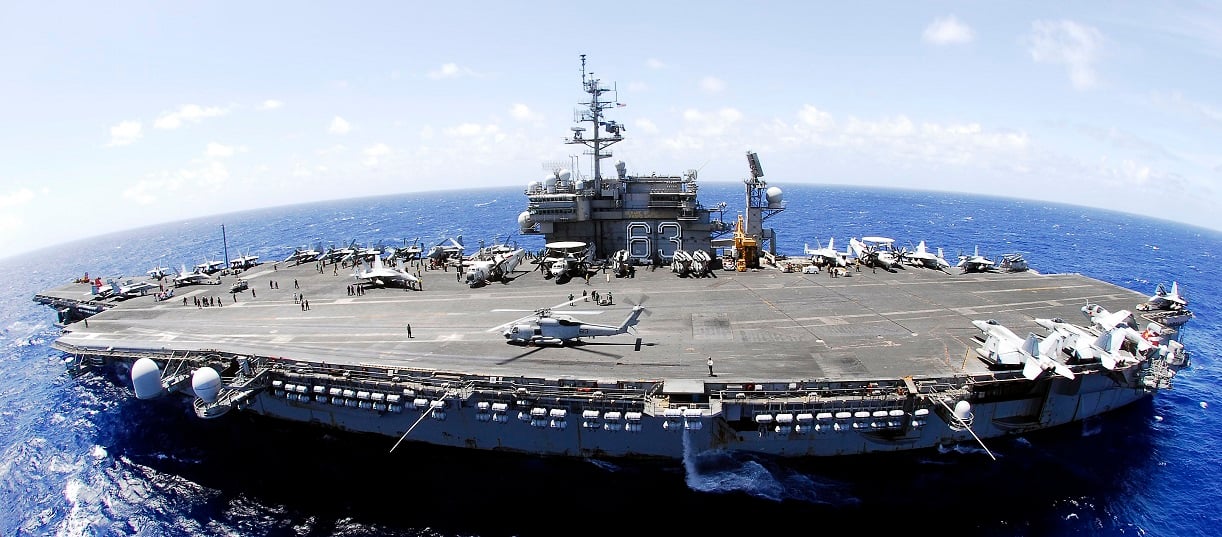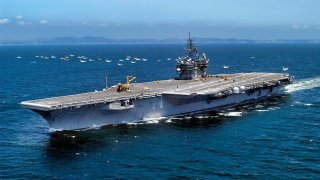'Sir, We Hit a Nuclear Submarine!': How a Navy Aircraft Carrier and Russian Nuclear Sub Collided
The USS Kitty Hawk (CVA/CV-63), the lead vessel of the last class of conventionally powered U.S. Navy aircraft carriers, was commissioned in 1961 and decommissioned in 2009. Notably, in 1984, it collided with the Soviet submarine K-314 during the "Team Spirit" exercises in the Sea of Japan, narrowly avoiding a nuclear disaster.
Summary and Key Points: The USS Kitty Hawk (CVA/CV-63), the lead vessel of the last class of conventionally powered U.S. Navy aircraft carriers, was commissioned in 1961 and decommissioned in 2009.

-Notably, in 1984, it collided with the Soviet submarine K-314 during the "Team Spirit" exercises in the Sea of Japan, narrowly avoiding a nuclear disaster.
-Despite the collision, there were no casualties, and both vessels managed to move away safely.
-Throughout its service, the Kitty Hawk participated in multiple significant operations, including the Vietnam War, the invasions of Iraq and Afghanistan, and Operation Restore Hope in Somalia.
USS Kitty Hawk: The Near-Fatal Cold War Collision with a Soviet Submarine
The lead vessel of the U.S. Navy's last class of conventionally powered aircraft carriers, USS Kitty Hawk (CVA/CV-63) was commissioned in April 1961. The second naval ship to be named after Kitty Hawk, North Carolina, the site of the Wright Brothers' first powered flight, from 2008 to 2012 she also had the distinction of being the U.S. Navy's second-longest active warship after the sailing ship USS Constitution – and for her final decade in service she was the Navy's forward-deployed carrier, based at Yokosuka Naval Base, Japan.
During her career, she participated in combat operations in the Vietnam War, and took part in the invasions of Iraq and Afghanistan in 2001 and 2003.
However, it was nearly two decades earlier that the conventionally-powered supercarrier had a very serious run-in with a Soviet submarine during the "Team Spirit" exercises in the Sea of Japan, about 160 miles east of South Korea. It could have been a true maritime disaster.
A Very Close Encounter
On March 21, 1984, as the U.S. Navy was engaged in exercises with the South Korean Navy, the Soviet Navy's Victor-class nuclear attack submarine K-314 Petropavlovsk was shadowing the USS Kitty Hawk. That was already known to the crew of the carrier, and a dangerous game of cat-and-mouse ensued.
According to a report from The New York Times dated March 22, 1984, the Soviet submarine was not running with navigation lights, as required by international rules. "A submarine must give way to a surface vessel when surfacing and is obliged to follow those rules when on the surface," explained the paper of record, adding, "Reports from the Kitty Kawk said sailors had felt a shudder, apparently as the submarine rose to the surface and struck a glancing blow."

The Soviet submarine apparently lost track of the U.S. carrier in bad weather, and its captain opted to take it to a depth of just 10 meters. It was a risky move under the best of conditions, but the weather likely made the situation far worse. As TheAviationGeekClub reported on the incident in 2019, "Through the periscope, Captain Vladimir Evseenko discovered that the entire USS Kitty Hawk CSG was only 4 to 5 kilometers away. More alarmingly still, the Americans and K-314 were heading towards each other at full throttle."
The Soviet submarine's commander gave the order to dive, but seconds later K-314 and USS Kitty Hawk collided with the boat.
"The first thought was that the conning tower had been destroyed and the submarine’s body was cut to pieces," explained Evseenko, per TheAviationGeekClub. "We checked the periscope and antennas – they were in order. No leaks were reported, and the mechanisms were ok. Then suddenly another strike! In the starboard side! We checked again – everything was in order…. We were trying to figure out what happened. It became clear that an aircraft carrier had rammed us. The second strike hit the propeller. The first one, most likely, bent the stabilator…"
The submarine had few options, and it was forced to surface. Aircraft from the United States were soon in the air to assess any damage from above.
"I was on the bridge at the time of the incident, monitoring one of the two radars," Capt. David N. Rogers, the commanding officer of USS Kitty Hawk at the time of the incident, told UPI in March 1984. "We felt a sudden shudder, a fairly violent shudder," and he added, "We immediately launched two helicopters to see if we could render any assistance to them but the Soviet sub appeared to have suffered no extensive damage."
It Could Have Been a Nuclear Disaster
Though there were no casualties, the submarine's propeller was seriously damaged while the carrier suffered a hole in its bow that caused several thousand tons of flammable jet fuel to leak into the sea. The situation could have been serious had fire engulfed the vessels.
In addition to K-314 Petropavlovsk being nuclear-powered, it may have been carrying at least two nuclear torpedoes – while the U.S. carrier had nuclear weapons in its arsenal.
In the end, a U.S. Navy frigate escorted the Soviet boat part of the way back to port, while the carrier headed to Subic Bay for repairs. Instead of finger-pointing from both sides, it was agreed that the Soviet submarine was in the wrong. Evseenko was relieved of his command and ended his career at a desk post. There were no further reports about the K-314, leading to speculation the submarine wasn't returned to service.
The United States Navy was able to take samples from the submarine's hull coating from where it rubbed against the carrier's hull. In addition, divers removed the blade of the boat's propeller, which was also retained.

The aircraft carrier was upgraded as part of the Service Life Extension Program (SLEP) from 1987 to 1991, and was deployed to the Western Pacific and even provided support to U.S. Marine forces in Somalia during Operation Restore Hope in 1992. After the terrorist attacks on the United States on 9/11, she was deployed to the Arabian Sea in support of Operation Enduring Freedom, and later supported the 2003 coalition invasion of Iraq during Operation Iraqi Freedom. In March 2008, USS Kitty Hawk completed her duties in the Pacific for the final time, and in January 2009 was the final conventionally powered U.S. Navy carrier to be officially decommissioned.

Author Experience and Expertise: Peter Suciu
Peter Suciu is a Michigan-based writer. He has contributed to more than four dozen magazines, newspapers, and websites with over 3,200 published pieces over a twenty-year career in journalism. He regularly writes about military hardware, firearms history, cybersecurity, politics, and international affairs. Peter is also a Contributing Writer for Forbes and Clearance Jobs. You can follow him on Twitter: @PeterSuciu. You can email the author: [email protected].
Image Credit: Creative Commons and/or Shutterstock.
This article has been updated since publication to fix a text mistake and add new pictures.


